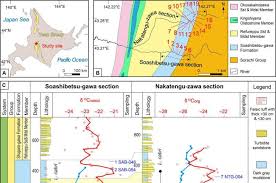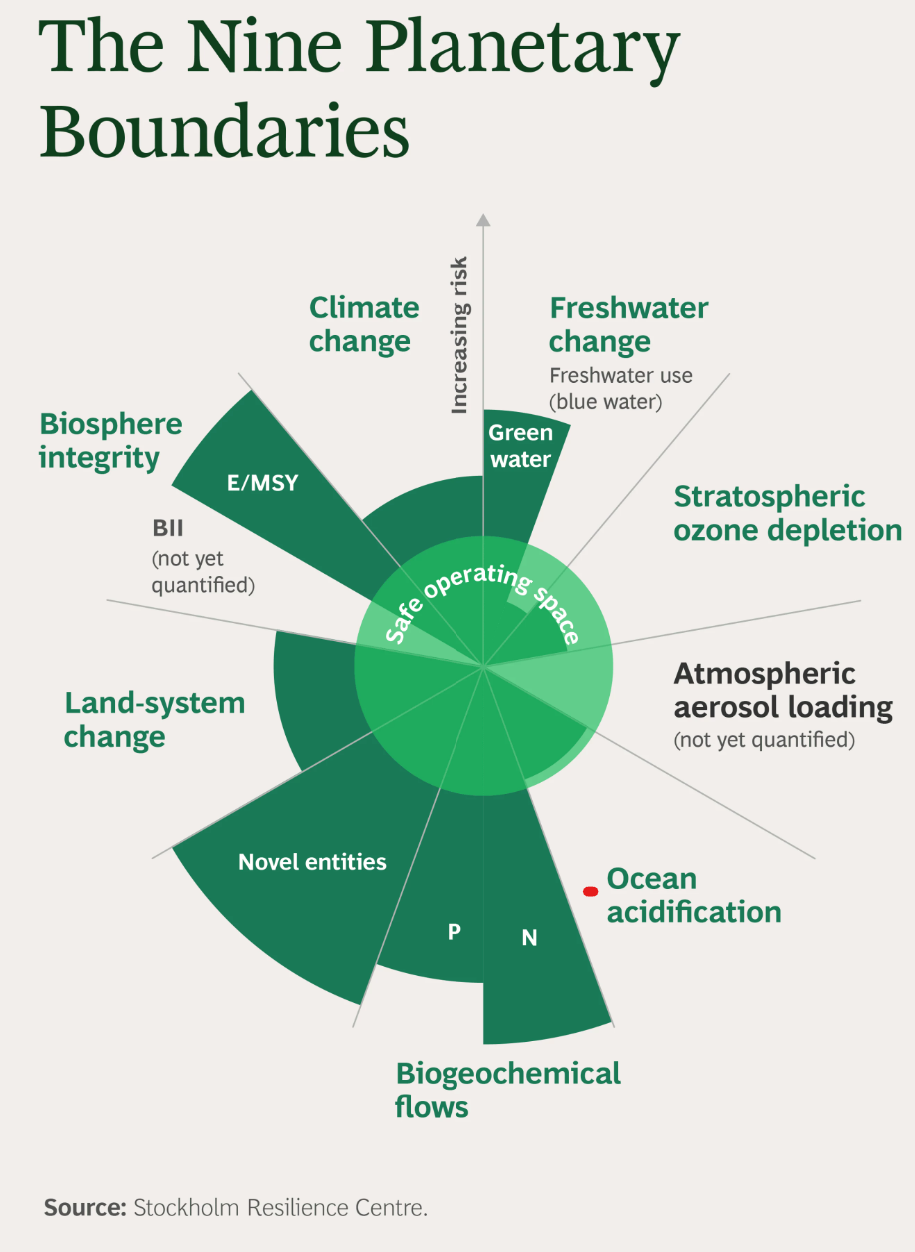Ocean Anoxic Event 1a (OAE 1a)

- 26 Dec 2024
In News:
A recent study published in Science Advances has offered fresh insights into the timing and duration of the Ocean Anoxic Event 1a (OAE 1a).
What is OAE 1a?
- Definition: A period during the Cretaceous Period (~119.5 million years ago) when Earth's oceans became oxygen-depleted (anoxic), causing significant disruption in marine ecosystems.
- Cause: Triggered by massive volcanic eruptions that released large amounts of CO?, leading to global warming and depletion of oxygen in oceans. This caused the formation of anoxic marine basins.
- Impact: The depletion of oxygen led to the extinction of marine species, especially plankton, and the formation of black shales (organic carbon-rich layers).
Anoxic Marine Basins:
- Characteristics: These are bodies of water with extremely low or absent oxygen, allowing certain microbes and fungi to thrive, while most aerobic organisms perish.
- Significance: Anoxic basins contribute to carbon sequestration by slowing down the decay of organic material, helping in the reduction of atmospheric CO? levels. Examples include the Black Sea, Cariaco Basin, and Orca Basin.
Recent Study Findings (Published in Science Advances):
- Timing: OAE 1a began approximately 119.5 million years ago and lasted for about 1.1 million years, with a long recovery period for ocean ecosystems.
- Methodology: The study used isotopic analysis of volcanic tuffs from Japan's Hokkaido Island to pinpoint the timing of the event.
- Volcanic Eruptions: The study confirmed that volcanic eruptions, particularly from the Ontong Java Nui complex, released CO?, triggering oceanic oxygen depletion.
- Relevance to Modern Climate Change: The study draws parallels between past volcanic CO? emissions and current human-induced warming, warning that rapid modern warming could cause similar disruptions in marine ecosystems and potentially lead to a Holocene extinction.
Holocene Extinction:
- Definition: The ongoing Sixth Mass Extinction, primarily driven by human activities like overexploitation, habitat loss, pollution, climate change, and invasive species.
- Impact: Current extinction rates are 1,000-10,000 times higher than natural rates, with severe consequences for biodiversity and ecosystem services.
Key Mass Extinction Events:
- Permian Extinction (~250 million years ago): Linked to volcanic activity, global warming, and ocean anoxia, leading to the extinction of over 95% of species.
- Cretaceous Extinction (66 million years ago): Caused by an asteroid impact, exacerbated by volcanic eruptions, leading to the extinction of non-avian dinosaurs.
- Holocene Extinction: Caused by human activities, with long-term implications for biodiversity and ecosystem services.
Efforts to Mitigate Extinction:
- Climate Action: Limiting global warming to 1.5°C as per the Paris Agreement.
- Biodiversity Conservation: The 30X30 Initiative, aiming to conserve 30% of lands and oceans globally by 2030.
- Sustainable Practices: Encouraging sustainable resource management to reduce habitat destruction, pollution, and overexploitation.
PLANETARY BOUNDARIES AND OCEAN ACIDIFICATION

- 27 Sep 2024
In News:
A new report from the Potsdam Institute for Climate Impact Research (PIK) indicates that the world's oceans are nearing critical acidity levels.
- Key Findings:
- Nine Crucial Factors: The report identifies nine essential elements for sustaining life on Earth.
- Exceeded Limits: Six of these factors have already surpassed safe limits due to human activities.
- Ocean Acidification: This is poised to become the seventh boundary breached.
- Crossed Boundaries:
- Factors Affected:
- Climate change
- Loss of natural species and habitats
- Depletion of freshwater resources
- Increase in pollutants, including plastics and agricultural chemicals
- Factors Affected:
- Causes of Ocean Acidification:
- Primarily driven by rising carbon dioxide (CO2) emissions from burning fossil fuels (oil, coal, gas).
- Implications of Acidification:
- Damage to corals, shellfish, and phytoplankton, disrupting marine ecosystems.
- Threats to food supplies for billions of people.
- Reduced capacity of oceans to absorb CO2, exacerbating global warming.
- Ozone Layer Status:
- Currently not close to being breached; showing recovery since the banning of harmful chemicals in 1987.
- Air Quality Concerns:
- A ninth boundary related to particulate matter is near danger limits.
- Improvements in air quality are noted, but industrializing nations still face pollution risks.
- Tipping Points:
- Crossing these boundaries could lead to irreversible and catastrophic consequences for humanity and future generations.
- All boundaries are interconnected; breaching one can destabilize the entire system.
- Opportunities for Solutions:
- Addressing critical issues, such as limiting temperature rise to 1.5 degrees Celsius above pre-industrial levels, can have widespread benefits across multiple environmental challenges.
Planetary boundaries
- The planetary boundaries were introduced in 2009 to define the global environmental limits within which humans can safely live.
- Johan Rockström, former director of the Stockholm Resilience Centre, led a group of 28 renowned scientists to identify the nine processes that regulate the stability and resilience of the Earth system.
- Climate Change: Greenhouse gas concentrations, primarily CO2, are the primary metric here. Exceeding the recommended levels risks amplifying global warming.
- Ocean Acidification: Oceans absorb CO2, leading to decreased pH levels. This boundary measures the carbonate ion concentration, vital for marine life like corals.
- Stratospheric Ozone Depletion: The ozone layer protects life from harmful ultraviolet radiation. This boundary emphasizes the ozone concentration in the stratosphere.
- Nitrogen and Phosphorus Cycles: Excess nitrogen and phosphorus, often from fertilizers, can disrupt ecosystems. Here, the focus is on their flow into the environment.
- Freshwater Use: Freshwater is vital for life. This boundary pinpoints the annual consumption of freshwater resources.
- Land-System Change: As we modify landscapes, particularly through deforestation, we alter habitats and carbon storage capabilities. This threshold concerns the amount of forested land remaining.
- Biodiversity Loss: Biodiversity underpins ecosystem resilience. This metric observes the extinction rate of species.
- Atmospheric Aerosol Loading: Aerosols influence climate and human health. This boundary examines their density in the atmosphere.
- Chemical Pollution: Synthetic chemicals can harm ecosystems and human health. This boundary reviews their concentration and spread.
